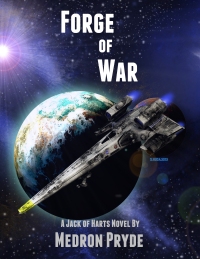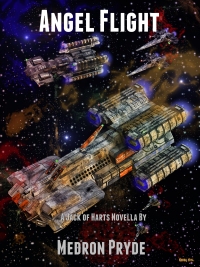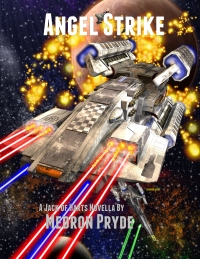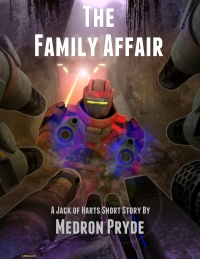Book of Civilizations – America
Hello, my name is Charles. America has a long history of civilizations dating from the last Ice Age to modern times. We have pyramids and roads as old as Egypt, and many of our cultures have been the largest and most powerful nations of their time. Our history is far longer and far greater than most people realize. Never underestimate either our history or our future.
The Book of Civilizations
America
America has a long history of civilization on our shores. The Andes Mountains of South America were home to civilizations as old as Egypt. We have the caves of El Abra where humanity sheltered during the Ice Age. There are the pyramids and aqueducts of grand Norte Chico. We can still see the pictures of animals carved into the landscape by the Nazca, but only from the air. And then there was the grand Incan Empire, the largest nation in the world of its time.
In Middle America, the Olmecs are the oldest known civilization. They came from Africa to trade and built an amazing culture with some of the greatest pyramids on the American continents. Artifacts show that they traded with people from Asia to Australia to Africa for thousands of years until volcanic eruptions covered much of their lands with ash and forced them to abandon their land not long before Christ was born. Their ballgame continues to be played to this day.
In North America, the Africans settled in California and Louisiana, where they built more pyramids and lived for thousands of years, even meeting the Europeans when we came. And Asians crossed the Bering Straight to settle in modern day Alaska, Canada, and the lower States of America. They built pueblo cities, multi-level houses and apartments surrounding a common plaza. They built the largest buildings in the Americas, carved into the canyon walls where their people could live, safe from their enemies. They spread out over most of North America, and when the Vikings tried to colonize the mainland the Indians made them disappear. They even went into the Middle America where they founded many of the strongest post-Olmec civilizations.
And then the Spanish found the Americas in 1492. A Catholic nation, they were operating under Papal edict to enslave every black man they found. Catholic teaching said that Ham dishonored his father Noah by seeing him naked and drunk, so all of his descendents wore black skin in shame had deserved to be enslaved to their betters. Historians do not know how fully the Conquistadors actually believed this, but they did seek to destroy, enslave, and take the gold from the people who looked like they had African ancestry. And when the other Indians declined to convert to Catholicism, the Conquistadors attacked those avowed heathens as well.
In their effort to get rich, the Conquistadors brought with them the most powerful weapon ever known to mankind. Smallpox was a tiny little bug that had ravaged Europe for thousands of years. The Indians of America had no experience with it, no immunity at all, and it whipped through their civilizations like a fire. From 1500 to 1600 AD, between eighty and ninety percent of the people who lived in the Americas died to smallpox and the other bugs that the Spanish brought with them. The most populous nations in the world, the Inca and Maya, never had a chance against those smallest of enemies. The survivors did what they could to rebuild, but the bugs had killed so many of them that the rest of them were reduced to wandering in the remnants of once great civilizations. Even now we are finding evidence of them beneath the surface of the earth, lost towns and cities covered by centuries of dust and the debris of time.
Other European nations followed the Spanish of course, which is why we are here now. Some of them looked for riches in the “New World,” and they often either purchased or took what they could from the Indians. Others came for different reasons entirely. The Pilgrims, seeking to escape religious persecution for their Congregationalist beliefs, came to Plymouth Rock in 1620 and founded the Massachusetts Bay Colony. That colony became one of the largest and most powerful colonies in the New World, with Boston one of the best ports on the western shore of the Atlantic.
The Congregationalists believed that each Congregation should be in charge of itself, with no Papal-like authority over them. This religious view filtered into their political views, where they thought the various colonies of England should be independent of the King of England as well. Many of the great names we remember from the founding of the United States of America, Adams, Hancock, and Franklin as quick examples, all hailed from the Congregationalist Churches of the time.
Many others came to America looking for freedom of religion as well, Baptists, Presbyterians, Quakers, and Lutherans. And many Church of England adherents supported their separatist brothers and sisters, bringing in more names to the Revolution that would change America. Washington, Madison, and Hamilton. Black Robed Regiments spread throughout the colonies, preaching that all men were created equal, with no need for a King to rule them, and some died for it. England tried to maintain control of the colonies by stamping down on their supporters, shutting down colonial governments in favor of governors loyal to the king, and initiating a military occupation of Boston. The people’s protests became more outspoken and they often dressed up as Indians, a common practice for protestors of the time since Indians were known to have a much freer lifestyle than the colonists.
The Continental Congress appealed to the King to relax his occupations. Instead, in 1775, the king’s forces tried to arrest their most vocal opponents Samuel Adams and President John Hancock, sparking the “shot heard round the world” and the shooting stage of the American Revolution. General George Washington liberated Boston before losing New York to a British counterattack. He regained American momentum by crossing the Delaware on Christmas and surprising the Hessian mercenaries working for the King. The war lasted many more years, with the British calling in their Indian allies to raid the Colonists. The Colonists called on their own Indian allies and raided in response. By the end of the Revolution the British-allied Indian nations lay in ruins.
The Nineteenth Century saw three American worlds coming to grip with a post Revolutionary continent. In the first world, there were the Indians, both Asian and African lineages, who saw their power diminished. In the second world, the culture wars waged between those who believed that freedom truly was the right of all mankind, no matter the color of their skin, and those who believed that it was the White Man’s Manifest Destiny to rule all of America. The two worlds crashed together when President Andrew Jackson signed the Indian Removal Act of 1830, authorizing the government to move all Indians to the other side of the Mississippi River. While officially voluntary, the relocations rarely were in practice. In the third world of politics, the States and the Federal Government fought for control of the entire United States of America.
In the end, all three worlds collided in the American Civil War. Nobody won the war. Some simply survived, and the United States that stumbled out of the war was far from united. Slavery was finally and irrevocably ended in America, but the age of Segregation would thrive for a century. The Indians fought on both sides, some rising to the ranks of General, but the government continued to remove them from their lands in the decades after. And the Federal Government gained firm control over the States, dictating that America was no longer a voluntary Union of Independent States for a united foreign policy, but that it could and would dictate domestic policies to them as well.
The Twentieth Century saw America uniting again, in a time of prosperity that could surely see no end. It also saw Europeans fighting a war that America sent her sons to die in. And then the First Great Depression brought the nation to its knees, followed by a Second World War against forces who killed based on race and culture. America came out of that war, more united and powerful than ever, and marched forward into a Cold War with Russia, confident that none could stop them.
Then America found Vietnam. Ironically, Vietnam wasn’t the center of the war. It was for the men and women who fought in it, but in America Vietnam was a boogieman, an idea that those who grew up in a land finally at peace with itself could not comprehend. They wondered why we were fighting against a socialist system that brought equality to everyone. Some of them retreated into communes and tried to just not think about the crazy hateful world outside their borders. Some went on the attack, reviling those who fought against the future, and crying out for a second revolution against both the political and cultural rulers of America.
First outside, and then inside the government, the revolutionaries fought for an America where the government provided everything that everyone needed to live, and government spending on social programs skyrocketed. There wasn’t enough money to spend so we left the gold standard behind and began printing money on paper and just saying it had value. It actually worked for a long time, but as the Twentieth Century blurred into the Twenty First Century the breaks in the economy were becoming visible.
That was when the Islamic Jihad brought the towers of the World Trade Center down and introduced America to a new world. It was a world where death and pain were not on the other side of an ocean, comfortably away from our little worlds. It could bring down our own friends, or own family, and the Americans allowed the federal government to take even more powers, all in the name of security. But even though they ran martial law in the airports, the government never did secure the borders of the nation.
While Mexican drug gangs crossed the border with impunity, terrorizing all Americans in the Southwest, the government strip-searched Americans in the airports and said that everything was secure. No terrorists could harm us. The government spent more money in social programs, giving us more “rights” to a television and a phone and a computer, and using those devices to spy on our every thought, our every desire. America even helped fund the installation of a permanent manned International Space Station in Martian orbit. All of the new money was printed by the central banks, as reliable as a house of cards against a swift wind.
In the end, the wind came, foreign governments stopped buying the debt that towered over our economy, and the government simply defaulted on it. The house of cards came tumbling down, and even some of the States fell into chaos. The Federal Government effectively ceased to exist for the everyday person. The alphabet soup agencies and the focus group named programs that told us all what to do just stopped because they didn’t have the money to even buy the gas it took to travel.
The government could not pay to deploy the largest military in the world anymore. Officially, they recalled all foreign troops, but they did not have the money to bring the armies back. The marines, and some lucky soldiers, took navy taxis home. They had to abandon all of their heavy equipment. The airlines failed and the rest had to hunker down where they were and hope things did not get too hot. Those in Germany survived well, drinking the best beer on the planet. Those left in Korea and Japan did not fair so well when the balloons went up and China came calling. The military never forgave the government that abandoned them.
The veterans who did get home found a government with no money to pay them. They found devastated economies with no available jobs. They found homes in foreclosure. It was the end of the world. Most military units joined the State Guards or disbanded. They worked with the counties, cities, and in many cases the Indian nations, to maintain effective control. Most of the rural regions survived without too many problems.
The great cities of America did not fare so well as the Second Great Depression fell on them. The jobless and homeless skyrocketed, squatters became the norm, and Islamic Brotherhood cells inflamed the tensions until riots like the Rodney King and G8 riots became the new normal. The cities burned. In Chicago alone, the great fires killed thousands and left millions without even an occupied home to go to.
Refugees fled the cities, often finding themselves in environments that they had no experience with. The smart and the lucky found places or people who could teach them how to grow food and survive in an environment in which there was no vast government to provide for them. In the end, nearly a 100 million Americans became destitute, with nowhere to turn. There are no records that say how many people actually died, but estimates run from a few million to fifty million to nearly 100 million people. Of course, Canada experienced a population boom during those years that they attribute to American immigration, so most historians place the outright deaths at the low end of the estimates.
The Southwest United States survived much better than most expected it would. For decades, entire swaths of their land had become no mans’ lands, where drug gangs from Mexico ruled and police and sheriff forces feared to go because they knew the federal government would put them in prison if they shot a drug runner. But with the American federal government no longer arming and supporting the Mexicans, its government had fallen as well and Mexico was in even worse chaos than most of America.
With the feds out of the way, the revitalized State Guards of Texas, Arizona, New Mexico, and the surviving parts of California decided it was high time to deal with the chaos south of the border for good. The four States began to patrol and cross the border on a regular basis, and their air, land, and sea forces began to target every drug cartel they could find, anywhere within range of their weapons. With Texas oil wells and refineries supporting them, the range the States could control turned out to be impressive indeed. Also, looking for more money to operate, they decriminalized most of the drugs and taxed them. Historians still argue to this day what was more responsible for the general end of the drug cartels, but the result of their actions was an end to the drug war that had plagued them for generations.
The United States of America did not of course completely fail. The federal government still existed. With the power of the purse stripped of it by its own actions, it simply lacked the power to enforce any laws. The surviving States that sent representatives to Washington D.C. decided to arrange things so it would stay that way. The complete collapse of the federal structure gave them clarity of vision of what had happened in previous decades, and the State representatives voted to dismantle the federal government programs in their entirety. They also passed bills to repeal the sixteenth and seventeenth amendments. The surviving States passed them in a matter of months.
The surviving States banded together to bring order to the areas of America in chaos, sending troops to deal with gangs or unfriendly military units in their jurisdictions. They also began programs to rebuild governments in the States that collapsed and voted to begin considering official recognition of Indian Nations sovereignty in recognition of the de facto situation many of them were in already. The reforms and rebuilding efforts would take years, and sometimes decades. California for example was not fully reunited under State authority until 2095.
In the meantime, America finally returned to the global stage in 2061, when they helped organize a flotilla of Canadian and British warships to protect Australia from a Chinese invasion force. The effort proved successful, limiting Chinese expansion for the first time since the Second Great Depression began. Within a year the four nations signed the Western Alliance into existence, and began working to pull each other out of the rut they were all in. Other European nations soon began asking for inclusion as well, and the new Alliance began to grow.
Cape Canaveral launched a ship into space in 2063 for the first time since the Depression began. It was a publicity stunt of course, but it did what the American States needed it to do. It showed to the world that America was back and capable of flying on its own. They even began testing mobile Orbital Elevators on the equator, looking for cheaper methods of pushing freight into space. The Mexican States, many Indian Nations, and islands in the Caribbean began asking to join the United States, and by the end of the century most of America from southern Mexico to Alaska flew the flag of the United States.
When China performed the first hyperspace jump in 2105, Americans followed within a few years and the Great Space Race began. To support the race, America helped Africa build an Orbital Elevator at Port Harcourt. Panama quickly saw an opportunity and asked for aid in building an Orbital Elevator next to the Panama Canal. After years of negotiations, Panama requested inclusion in the United States of America and American began building the Panama City Orbital Elevator. Panama became America’s path to the stars, and one of the primary methods of pushing the original modules of the new Alliance Station in high earth orbit into space.
America and the Western Alliance cooperated to colonize over a dozen worlds during the Twenty Second Century, but America colonized half a dozen on its own as well. These core worlds, most within fifty lightyears of Earth, became the center of both American and Western Alliance power. We sent NASA missions to explore the bubble of clear space around us, and found that The Walls of The Terran Bubble as we now call it were truly impassable. In 2205, we finally found a way through, and that was the year the Peloran made Contact with us. That was the year that we finally met intelligent alien races. That was the year we found out they looked just like us. That was unexpected.
In the century since, America and the Western Alliance have placed colonies throughout the Terran Bubble, and we even have a handful outside The Bubble. Independence was the first and is still the largest colony outside The Wall. The united America that we are now is one of the greatest nations in all the worlds.
That is why another alien race, the Shang attacked, us in 2304. They destroyed our largest naval yard when they hit Yosemite, and they killed almost our entire federal government when they hit Washington D.C. They wanted to break us, but our States are used to working without federal interference.
Yosemite hurt but we have other factories. D.C. simply angered us and answered their demands to surrender with warships and guns. With our allies in the Western Alliance at our side, we will teach the Shang to regret their attack. America will live on.
 The Martian Affair on Amazon
The Martian Affair on Amazon Forge of War on Amazon
Forge of War on Amazon The Audacious Affair on Amazon
The Audacious Affair on Amazon Angel Flight on Amazon
Angel Flight on Amazon Angel Strike on Amazon
Angel Strike on Amazon Angel War on Amazon
Angel War on Amazon The Family Affair on Amazon
The Family Affair on Amazon The Thunderbird Affair on Amazon
The Thunderbird Affair on Amazon Wolfenheim Rising on Amazon
Wolfenheim Rising on Amazon Wolfenheim Emergent on Amazon
Wolfenheim Emergent on Amazon The Gemini Affair on Amazon
The Gemini Affair on Amazon
A Book of South America is actually on my list of things to do. They are an unaligned nation. As for Charles, his friends call him Chuck. His REALLY GOOD friends. Everyone else can call him Charles. 🙂
Sounds like Charles is American. Why doesn’t he go by the nickname Chuck or Charlie?
Since this seems to cover all the Americas, I’m curious how the SouthAm nations/states faired during the 2nd Great Depression. Also, a little more about culture would be cool. Source Book time!